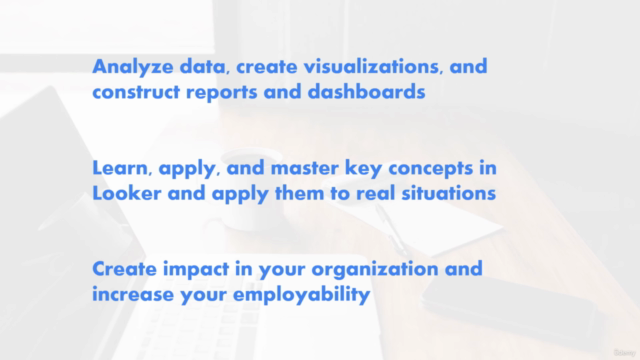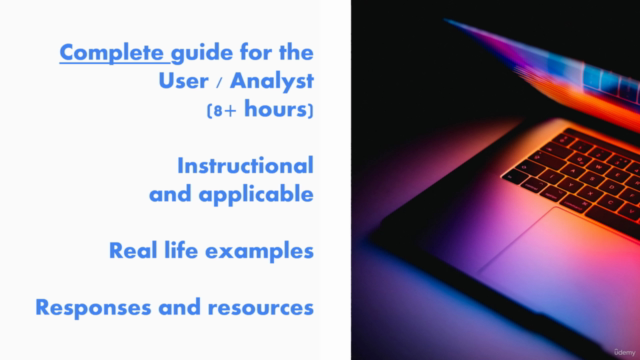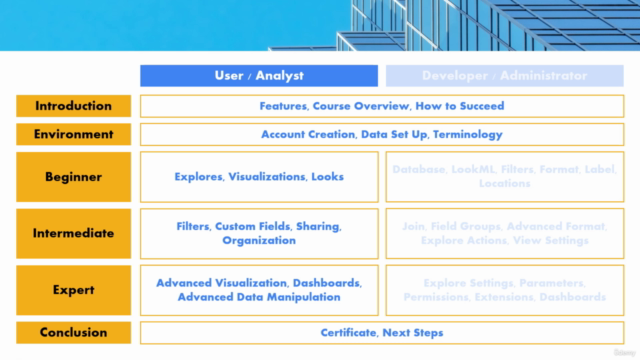Looker - Complete Guide to Google Looker - User and Analyst

Why take this course?
Looker is a business intelligence (BI) and data analytics platform that enables users to explore, visualize, and share real-time business analytics through its powerful LookML modeling layer. It allows organizations to easily turn complex data analysis into actionable insights. As a user or analyst who works with Looker, you'll be able to:
-
Explore Data: Use Explores to interactively query your data source and perform ad-hoc analysis without needing to write SQL. Looker provides an intuitive interface where you can select dimensions, measures, and filters to explore your data.
-
Visualize Insights: Create beautiful and informative visualizations using Looks. These are saved queries that allow you to repeat complex analyses with just a few clicks. You can customize visualizations with various chart types like line charts, bar graphs, scatter plots, pie charts, etc.
-
Share Results: Share your findings with others in your organization by embedding Looks into dashboards or sharing them directly as links. Looker's collaboration tools make it easy to communicate insights with your team, department, or the entire company.
-
Organize with Dashboards: Build dynamic dashboards that give a comprehensive view of your data, combining multiple visualizations into a single page. These dashboards can be interactive, allowing users to drill down into the data for more details.
-
Filter Data: Apply filters to your Looks and dashboards to make your analysis more relevant and tailored to specific business needs. This can help in focusing on key metrics or segments of the data that are most important to decision-making processes.
-
Create Custom Fields: Use custom dimensions and measures to create new fields in Looker that weren't there before, allowing for even more nuanced analysis.
-
Use Advanced Features: Explore advanced features like control breaks, pivots, and subtotals within your data to gain deeper insights and understanding of the underlying trends.
-
Learn with Documentation and Community: Looker provides extensive documentation, forums, and a supportive community that can help you resolve issues and learn more about best practices and advanced usage.
-
Become Certified: Demonstrate your expertise by earning the Google Cloud Certified - Data Analyst (formerly known as Looker Certified Analyst) certification, which validates your proficiency with the platform.
-
Continuous Learning: Keep up-to-date with new features and improvements in Looker through regular updates from Google, and continue to enhance your data analysis skills.
By following a structured course like the one outlined above, you can become proficient in using Looker as a User or Analyst. This will not only empower you to make data-driven decisions but also contribute to the overall data culture within your organization. Remember, the key to mastering Looker is consistent practice and exploration of its features and functionalities.
Course Gallery




Loading charts...